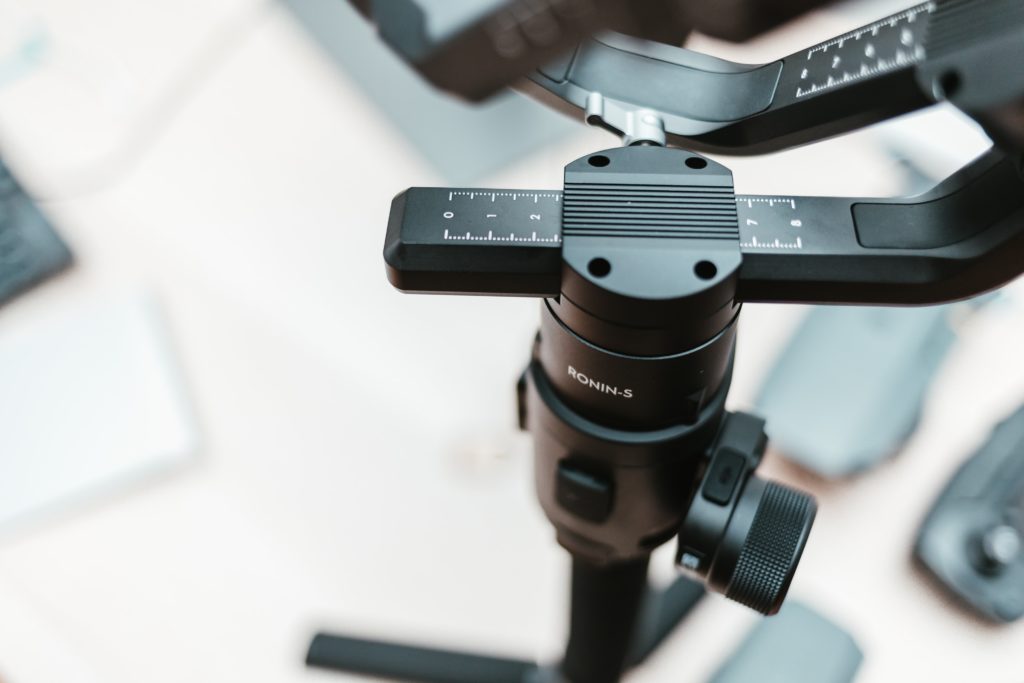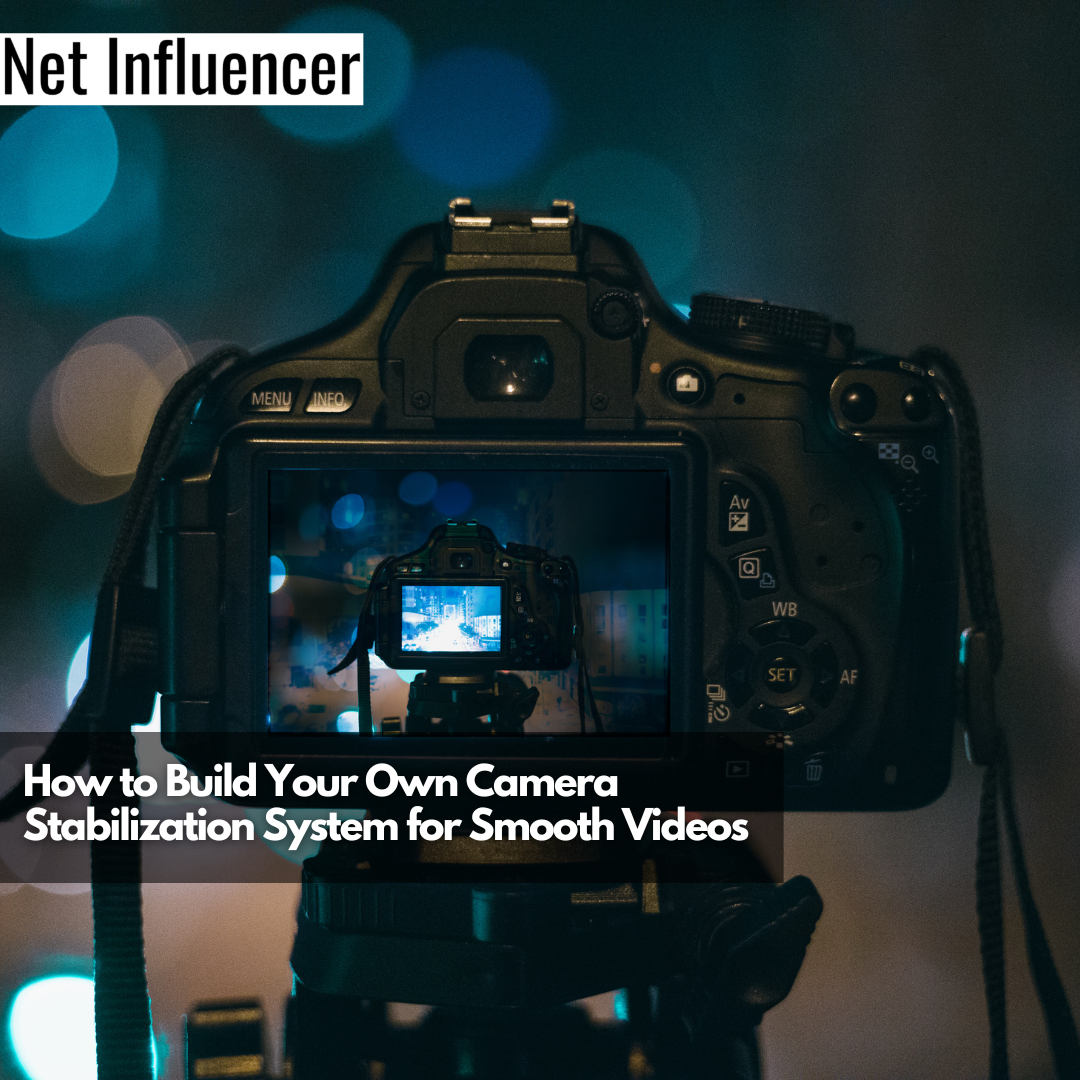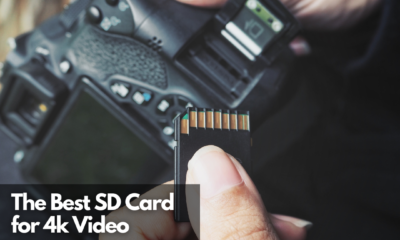Influencer
How to Build Your Own Camera Stabilization System for Smooth Videos
It does not need to be expensive to get a camera stabilizer for your online videos. In this post, we walk you through step-by-step instructions for three different projects to create your own DIY cam stabilizer.
Build Your Own Camera Stabilization System for Smooth Videos
To produce high-quality videos for YouTube or other sites, you need to be able to capture smooth video footage that is free of shaking.
If you do not have a camera stabilization system, you might assume that a cam stabilizer is out of reach for your budget. But you can build your own DIY cam stabilizer more quickly and affordably than you might think. In this post, we share step-by-step instructions with you for three different DIY cam stabilizer projects.
Project #1: $5 Gimbal Action Camera Stabilizer
5$ Gimbal Action Camera stabilizer – homemade tutorial DIY
If you cannot afford to purchase a gimbal stabilizer for your camera, you can make one for just $5 (not including the cost of a power drill). Here is how to do it.
You Will Need:
- Power drill
- 3 steel corner braces
- 2 tamiya bearings
- Bolts and nuts
- Clear epoxy
- 1 scooter handle
- 4 plastic bottle caps
- 1 small piece of wood
Step-by-Step Instructions:
1. Get an old handlebar from a child’s scooter, bicycle, tricycle, etc.
2. Shape the small piece of wood into a cylinder, and drill a hole through the center of it. You need to size the cylinder of wood so that you can push it into the open end of the scooter handle. It should be a snug fit so that the handle holds it in place.
3. Insert a bolt into the cylinder so it protrudes out. Do this before you insert the piece of wood into the scooter handle.
4. Now, turn your attention to the corner braces you purchased. Use the nuts and bolts to connect them to each other end-to-end. They should form roughly the shape of a square when you are done.

5. Use the bottle caps to cover the nuts and bolts on the outside.
6. The last step is just to attach the framework of corner braces to the handlebar using the bolt that is protruding through the piece of wood.
Now your $5 gimbal DIY cam stabilizer is all ready to use.
Project #2: $15 DIY Steadicam
$15 DIY steadicam in 15 minutes!
Here is a project for building a DIY Steadicam that you can complete in just 15 minutes using supplies that cost only $15 (not including the drill). Contrast that with the $700 or so you would spend to purchase a brand-name Steadicam.
You Will Need:
- Power drill with a ¼” drill bit
- Galvanized steel pipes
- ½” metal T joint
- Metal end caps
- ½” metal flange
- 1” thick wood
- ¾” screws
- ¼” machine bolt
- Washer
- 2.5 lb weight plates
Step-by-Step Instructions:
1. Begin by attaching all of the pipes together to create the shape of the Steadicam.
2. Put an end cap on the bottom.
3. Set your flange down on top of a piece of wood right in the middle. Use the drill to attach the flange to the piece of wood using the screws. The flange will have four holes in it, but you only want to drill screws through three of them. The fourth hole will be used for mounting.
4. Connect the ¼” drill bit to the power drill.
5. Drill straight through the hole in the flange all the way through the back of the wood piece.
6. Push the machine bolt through the hole.
7. Attach the wood block to one of the ends of pipe that does not have an end cap on it.
8. Remove the cap from the bottom. Attach the weights. Put the cap back on.
When you are ready to use this DIY cam stabilizer, use the machine bolt on top of the wood block to mount your camera.
Project #3: $13 PVC Camera Stabilizer
Here is another simple project for building a DIY cam stabilizer similar to the one above. It may cost you a couple dollars less in some cases (not including the cost of a tripod mount, which you hopefully already have handy). The basic concept is the same, but you do not have to build a mount for this project.
You Will Need:
- 3 3/4″ PVC pipe caps
- 3 3/4″ PVC elbows
- 1 3/4″ PVC cross
- 2 3/4″ PVC pipes (2’ each)
- 1 1/2″ PVC pipes (2’)
- 1 3/4″ metal nipple
- 1 standard tripod head mount
- 2 2.5 lb dumbbell weights
- 1 tripod mount
- Grips (optional)
Step-by-Step Instructions:
1. Cut a ¾” PVC pipe into four pieces. 2 pieces should measure 3”, and 2 pieces should measure 5”.
The other ¾” PVC pipe will serve as the main segment of your stabilizer, so you want to keep it 2’ long.
2. Put one end cap on the bottom.
3. Attach the PVC cross to the nipple. On the other end of the nipple, attach the ½” PVC pipe. The materials mention picking up 2’ of this, and the video does not mention cutting it, but it shows a smaller piece. You then attach the long ¾” PVC pipe to the other end of the PVC cross.
4. Attach the 3” sections of ¾” PVC pipes to the cross on either side to start making the handles.
5. Attach the elbows to the sections in the previous step to continue building the handles.
6. Connect the 5” sections of ¾” PVC pipe you cut to the other ends of the elbows to finish the handles.
7. Attach the other two end caps to the ends of the handles.
8. Connect the tripod mount to the top of the stabilizer.
9. The weights go on the bottom. Take off the end cap to fit them on, and then place the end cap back on to hold them in place.
Quick Tip
If you want a completed DIY cam stabilizer to look more professional, you should consider spray-painting it black. But you can skip this step if you do not care about its appearance.
Even on a Shoestring Budget, You Can Build a Camera Stabilizer
A functional camera stabilizer does not need to run you hundreds of dollars. For under $20, you can build a working DIY cam stabilizer using basic tools and skills.
Your finished stabilizer may not look as fancy or professional as a store-bought stabilizer, but it can still give you the pro-level stabilization you need to shoot smooth, high quality videos.















